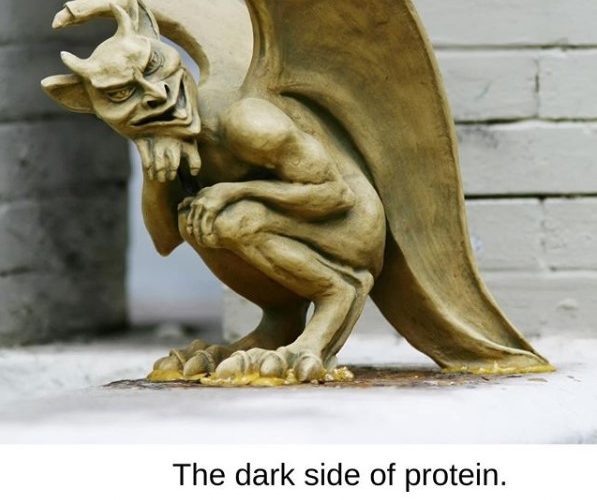It’s not wise to use food labels of processed foods to determine actual protein content because food labeling information may be inaccurate. Food labeling information is based upon a food component calorie estimation, which is calculated by adding up the calories provided by the energy-containing nutrients: protein, carbohydrate, fat, and alcohol. The Atwater system uses the average values of 4 Kcal/g for protein, 4 Kcal/g for carbohydrates, 9 Kcal/g for fat, and 7 Kcal/g for alcohol.
The food labels measure nitrogen, which is presumed to be a protein source. According to Food and Agriculture Organization of the United Nations, “The protein content of foods has been determined on the basis of total nitrogen content… nitrogen content is then multiplied by a factor to arrive at protein content.”
But we have seen nefarious situations, where manufacturers simply increased the nitrogen content of food, adding toxins such as Formica or melamine. According to a 2008 article in Scientific American, “dairy products… contaminated with a chemical called melamine have sickened at least 54,000 babies and killed four… melamine is a nitrogen-based compound used in commercial and industrial plastics… An estimated 8,500 dogs and cats died of kidney failure after chowing down on melamine laced fare… food companies use the nitrogen-based compound in wheat flour and other products to make these products appear to have more protein. Normally, proteins are the only source of nitrogen in food, so by looking for that element in tests, one can figure out relative protein concentrations.” The amount of nitrogen, which represents a protein, does not mean that it is biologically available or that it is even protein.
If you eat whole real food, none of this matters. Get natural protein from natural sources. Avoid processed foods, vegetable oils, and refined carbohydrates and grains.






